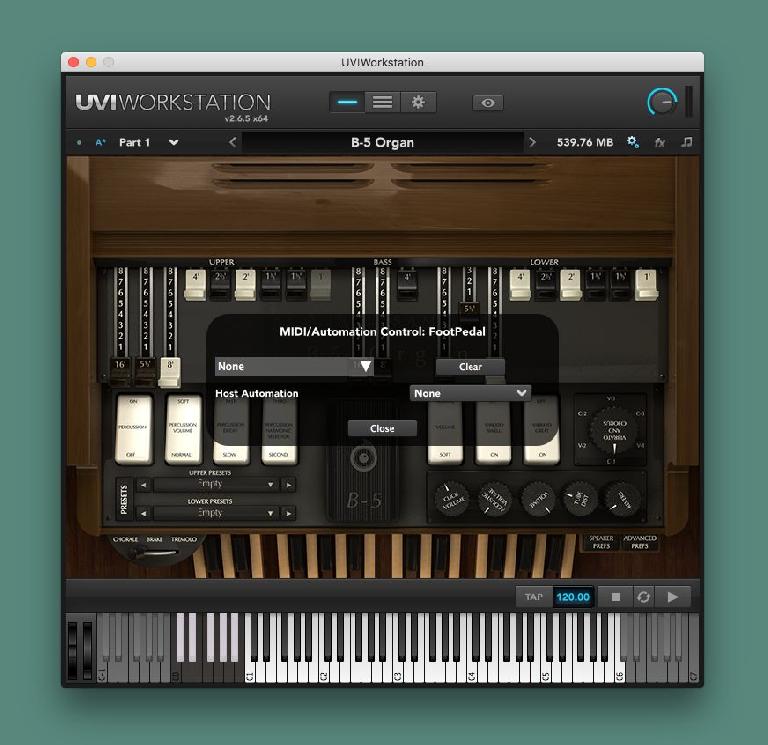I remember my first gig where I was able to play a real Hammond Organ. As a ‘post-60s-by-a-few-decades’ child, I didn’t have access to one when I was first getting into keyboard playing. When the keyboard tech first flipped on the Leslie speaker and I leaned into that double manual I instantly realized every sampler recreation of that sound was a pale and sad comparison to the real thing.
We’ve come a long way since my first Hammond gig, and with significantly better sampling technology as well as smart, scripted libraries it’s now possible to come eerily close to the real thing. My organ virtual instrument of choice is B-5 from Acoustic Samples. From top to bottom, this instrument does a fabulous job of recreating the good and the bad of using a real drawbar organ. Here are four tips to bring your organ tracks up to the next level of realism!
Dynamic Duo
One of the first and most common mistakes I hear in productions where the player doesn’t have a whole heck of a lot of experience is with dynamics. The organ doesn’t have velocity sensitivity like a piano does, and many players forget that the primary way an organist controls dynamics and brings motion and excitement to their playing is with the swell pedal. In B-5 it’s easy enough to map a control pedal to this on-screen control with a right-click. With your organ of choice, don’t slack off! Hook up a control pedal and practice, practice. Bringing some swells to your organ tracks will make them… well… swell. (I apologize for that, I couldn’t resist).
Don’t Over Cook
When you first load up your organ sound, if it has an excellent Leslie speaker simulator it can be very tempting to fire it up to high speed immediately. Try to hold yourself back a bit. Using the slower rotational speed, even during choruses and louder parts, can be extremely effective and can also help you stay ‘out of the way’ of other instruments. Saving your high speed for that ‘special moment’ can be a great way to build excitement with your organ tracks. I often map the rotor control to my sustain pedal. In B-5 it’s a simple right-click but in your instrument of the day you may have to manually assign it to MIDI CC #64. This way you force yourself to hold the sustain pedal down for the speed to be fast and you can really encourage your mind to think before you kick it into high gear.
Manual Mode
This one may sound a bit basic, but it needs to be said. Don't forget that you’re likely emulating a 2-keyboard instrument with a single keyboard. Organs often have an upper and lower ‘manual’ which can have independent pipe settings. Find out what the ‘split point’ is on your keyboard for the upper and lower settings and adjust accordingly. You may want to have a darker tone for you left hand and let it open up brighter with the right.
Direct Drive
Many organ instruments will give you the option of using the ‘DI’ or direct sound of the organ without Leslie simulation. Don’t discount this option, it can be a great way to get the pure organ sound out and into your own effect chain! Perhaps you want to run your organ into Guitar Rig, Bias, or another amp/pedal simulation program. Maybe you’re lucky enough to have access to a real Leslie speaker and don’t want to ‘double up’ in the chain. Or, perhaps you want a simple and clean tone for your track. Whatever the case, I do prefer to use an organ instrument that gives me the option to ‘go direct’ if I need to.




 © 2024 Ask.Audio
A NonLinear Educating Company
© 2024 Ask.Audio
A NonLinear Educating Company
Discussion
Want to join the discussion?
Create an account or login to get started!